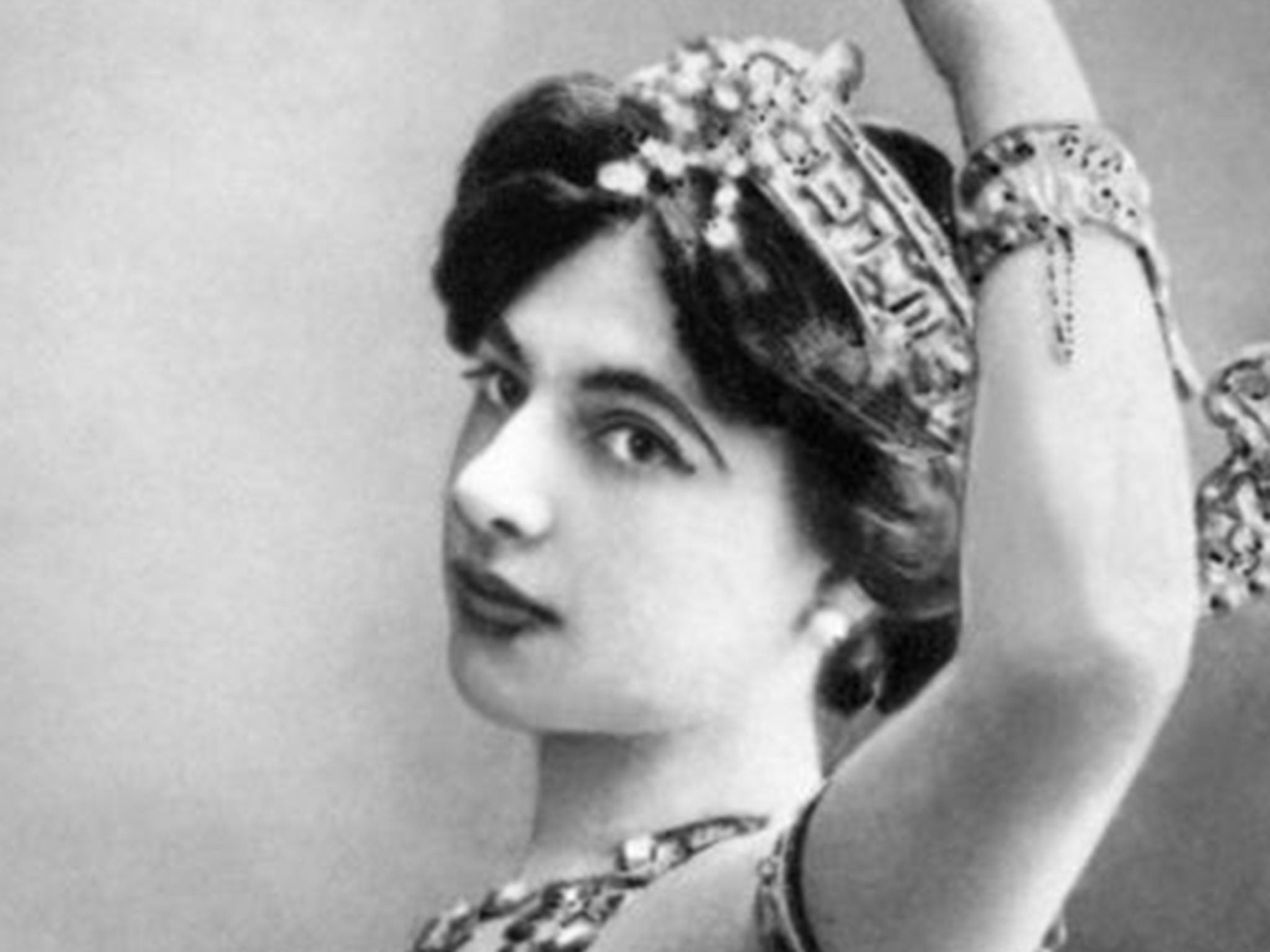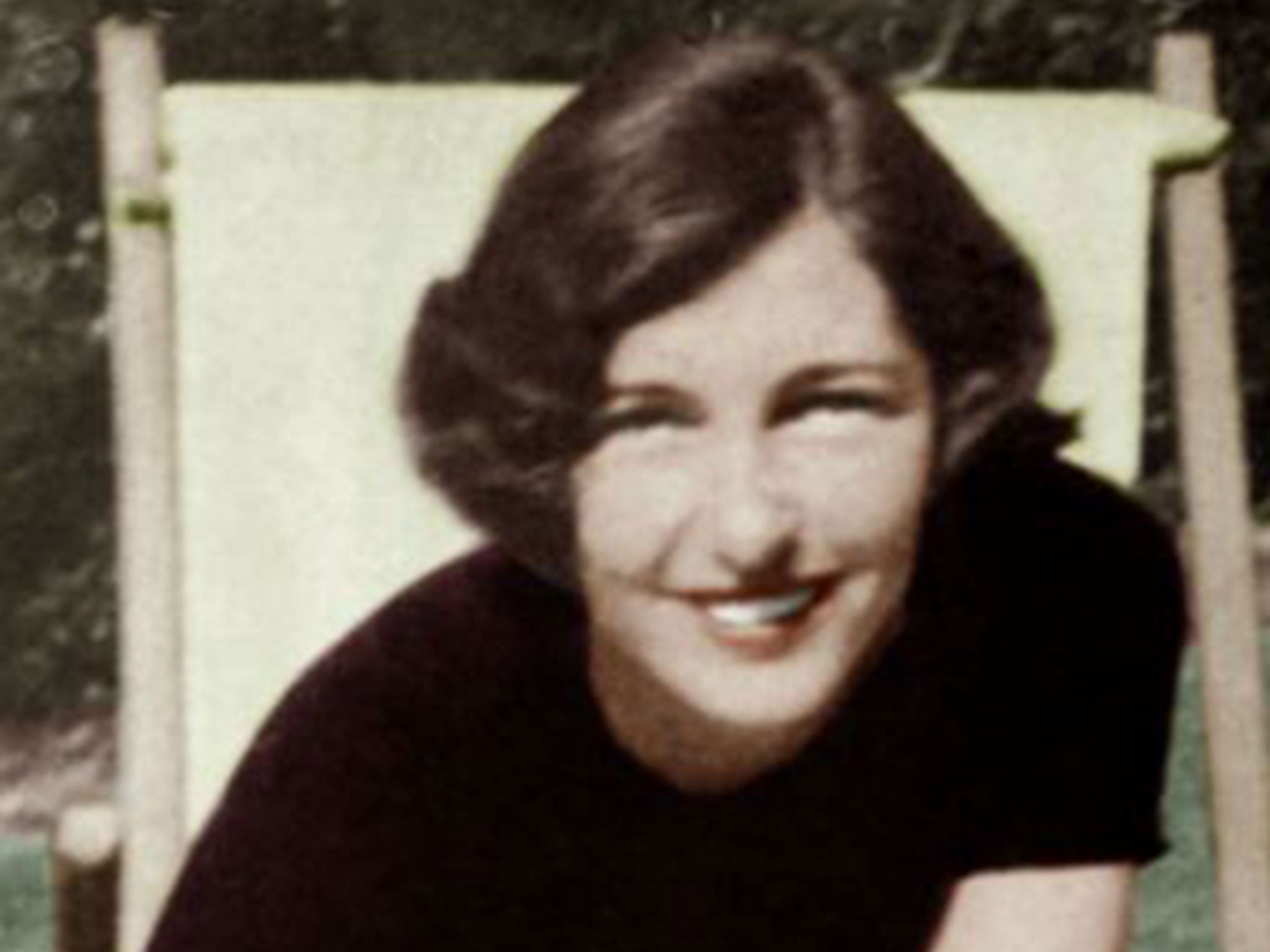Revealed after 75 years of secrecy: 'Fifi' the glamorous WW2 special agent who tested British spies' resolve
Declassified records show how Marie Christine Chilver spent the war

Your support helps us to tell the story
From reproductive rights to climate change to Big Tech, The Independent is on the ground when the story is developing. Whether it's investigating the financials of Elon Musk's pro-Trump PAC or producing our latest documentary, 'The A Word', which shines a light on the American women fighting for reproductive rights, we know how important it is to parse out the facts from the messaging.
At such a critical moment in US history, we need reporters on the ground. Your donation allows us to keep sending journalists to speak to both sides of the story.
The Independent is trusted by Americans across the entire political spectrum. And unlike many other quality news outlets, we choose not to lock Americans out of our reporting and analysis with paywalls. We believe quality journalism should be available to everyone, paid for by those who can afford it.
Your support makes all the difference.When José Tinchant, a trainee British spy, was approached by a striking Frenchwoman in a Liverpool café in 1942, his instruction not to divulge any information useful to the enemy might have been expected to kick in and a frosty silence to ensue.
Unfortunately for Tinchant, a candidate to join the Special Operations Executive (SOE) founded by Winston Churchill to “set Europe ablaze”, he had been targeted by “Fifi”, British intelligence’s first full-time, and highly accomplished, agent provocatrice.
In her subsequent report to her superiors, Fifi observed acidly: “We spent the day together and by the evening I had learnt practically all there was to know about him.”
It was a blow from which Tinchant, a Belgian codenamed Tas, and his career as a saboteur could not recover. He was abruptly told by SOE that his future did not lie in espionage after all.
The existence of a Second World War “special agent” recruited to test the sangfroid of SOE trainees by confronting them with a beautiful woman while on field tests in provincial English cities had long been rumoured but no evidence ever produced.
Now, a release by the National Archives of more than 3,000 MI5 and SOE files has revealed for the first time the identity of Fifi as Marie Christine Chilver, the multilingual daughter of the prewar Latvia correspondent of The Times of London, who had been studying at the Sorbonne in Paris at the outbreak of the war.
Documents released today tell the remarkable story of how Ms Chilver escaped Nazi internment in France, helped nurse a wounded RAF pilot back to health behind enemy lines and was then enlisted to conduct some of the most secret work of the war.

Her 250-page personnel file details how the glamorous 22-year-old blonde was spotted by British intelligence after she arrived back in England in 1942 with the airman, one Flight Lieutenant Simpson, who expressed his gratitude for her care while hiding in Lyon by shopping her to the authorities as a likely spy.
In an internal memo, MI5 noted that Fl Lt Simpson had described Ms Chilver as “one of the expert liars in the world and extremely intelligent”. The main plank of the pilot’s suspicions was that the elegant Briton had been too well dressed to have recently escaped Besançon prison.
A subsequent Security Service interrogation in fact gave her a clean bill of health, declaring she had “quite unusual gifts of intelligence, courage and assessment of character”. She was put forward for work described coyly by SOE as “entirely experimental”.
Ms Chilver was stripped of her British identity by the SOE and given the alias of Christine Collard, a Frenchwoman who had fled to England and was working as a freelance journalist with, perhaps slightly implausibly, a particular interest in the railways.
Her brief was to travel throughout the English provinces to surprise trainee agents who had been sent out on “96-hour schemes” or four-day field tests in simulated “enemy territory”. Told to expect a man to contact them in a hotel bar or pub in locations from Cardiff to Newcastle, the trainees were instead confronted by the glamorous figure of Fifi, judged by her own superiors to be “too striking and foreign for English tastes” but perfect for Continental recruits.

Trainers were interested to know what would happen when Fifi approached the would-be agents by name, a tactic they feared would be employed by the Gestapo if it had obtained details from a tortured captive and then send a female agent to sniff out other members of a spy ring.
In detailed reports, Fifi, whose identity was obsessively kept by SOE even from its own trainers at its “finishing school” in Hampshire, delivered her verdict on what her superiors candidly described as “her prey”.
When one Norwegian operative who had fallen for her tactic of offering help for his mission broke down after realising his error, she recommended he continue his deployment, writing: “I was very impressed by his eagerness to see his own mistakes and his courage in admitting them”.
Her encounter with another recruit, who insisted on staying in a men-only bar in a pub in Wolverhampton (a “revolting town” according to her handlers) rather than talk to her, drew a satisfied response from her controllers: “The student in this case seems to have been terrified of her, which I suppose is a satisfactory result.”
As the war progressed, Fifi and the SOE refined her role, obtaining for her a press card for Housewife magazine and specifying that she had to test the “general discretion” and then “resistance to provocation” of recruits.
Although SOE pointed that in order to perform her task she had to “get herself ‘picked up’ by the man”, there is no evidence in the files that her tests turned into assignations or affairs. Indeed, Ms Chilver herself expressed increasing concern at the value of her work, suggesting it was “too malicious a ruse”.

Such was the iron grip that the intelligence services exerted on their staff that she was at one point challenged on her decision to file a 1p expenses claim for a newspaper bought to read while waiting for a contact.
By 1945, Ms Chilver, who died in 2007 after returning to Latvia to set up an animal rescue charity, had herself undergone training to be sent to abroad as an agent but instead was sent to post-war Germany in 1945 in another intelligence role.
When her new employer wrote seeking a reference, SOE replied that it had “no hesitation in stating that she is trustworthy and reliable and is in every way suitable for employment of a confidential nature”.
Other famed female spies
Mata Hari – the original femme fatale, Hari was a Dutch-born exotic dancer whose fame in Paris during the First World War as a high-society courtesan was cut short by her arrest on suspicion of being a German spy. She denied the charge but was executed by firing squad in 1917. Subsequent records showed she had indeed been an agent for Berlin.
Anna Chapman – the red-headed Russian, who was married to a Briton, achieved global fame in 2010 when she was arrested in New York on suspicion of being a member of a Moscow spy ring of so-called “sleeper agents” ready to be activated by her handlers. She was returned to Moscow as part of a prisoner swap.
Krystyna Skarbek, aka Christine Granville – after fleeing her native Poland at the outbreak of the Second World War, Skarbek joined the Special Operations Executive and became perhaps its most successful female operative. She once secured her freedom and that of colleagues by pretending to be the niece of Field Marshall Montgomery. Tales of her exploits are said to have inspired Ian Fleming to create the character of Vesper Lynd in his 007 novels.
Subscribe to Independent Premium to bookmark this article
Want to bookmark your favourite articles and stories to read or reference later? Start your Independent Premium subscription today.
Join our commenting forum
Join thought-provoking conversations, follow other Independent readers and see their replies
Comments